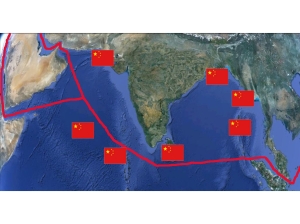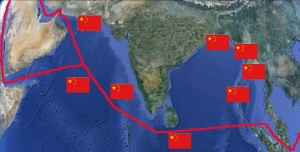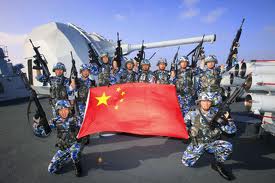President Hu Jintao back in 2003 started to mention the so called “Malacca Dilemma”, the fact that 80% of China energy needs will pass thorugh the waters of Malacca, without having any strategic influence over it1.
The Chinese leadership is quite aware that whoever will control the Strait will be able to choke the supply line of the People’s Republic. It is interesting to note that the notion of the Malacca Dilemma and the String of Pearls were born almost at the same time. The String of Pearls is much more famous, but is also more misleading. It aims to address the containment policy of China against India. If you reflect, China will never be able to evict India from the Indian Ocean. Moreover China is already a global superpower, while India is struggling to become a regional one. The only field in which they are competing directly is natural resources. But the String of Pearls won’t deny that to India. The truth is that the String of Pearls is a menace perceived by the US. Washington really could be excluded from the South East. So the Americans are pushing the Indians to think they are threatened by the Chinese.
In this puzzle, the role of a piece is growing in importance: Myanmar. Back in 2007, president Bush put its eyes on the humanitarian condition of Burmese people2. It is praiseworthy, especially from an administration that launched wars to appropriate natural resources of sovereign state, practised unlawful detentions, torture, extrajudiciary killings and so on. Myanmar is itself rich in natural resources and lies in a strategic position: just before the Malacca Strait. Much of the attention Myanmar received in recent years should be probably ascribed to this aspect, rather than the restless endeavour of the US for human rights.
The Tamil diaspora in Malaysia
Finally, with regards to Sri Lanka, it should be clear that there is no such a thing as India strangled by China. Beijing is securing its supply lane; Sri Lanka is part of this architecture. Nobody in New Delhi has been forced to do anything. What happened to the Tamils and the LTTE has nothing to do with the clash of global super powers. Sri Lankan deeds are a domestic affair for India and they have been treated as such. It is easier to blame the Chinese and because they consider this kind of debate as farcical, they don’t even defend themselves. But an accurate analysis of the geopolitical interests will show that Sri Lanka is under the patronage of India, with occasional and contingent flirtations with China, dictated by convenience rather than long term alliances.
The Malacca Strait is the place where the future rearrangement of the global balance of power will take place. India should start to look at its interest, rather than following the clue thrown by the Americans (though sometimes they could overlap in any case). And if the Tamil diaspora in Malaysia has any intention to influence the international scenario, should start to appreciate its strategic role in this context, rather than chasing the infinite intrigues of New Delhi politics.
1Chen Shaofeng, “China’s Self-Extrication from the “Malacca Dilemma” and Implications” International Journal of China Studies China’s Vol. 1, No. 1, January 2010, pp. 1-24






















